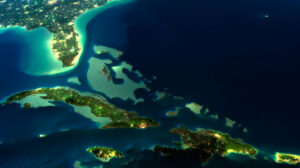Scientists think they’ve stumbled on a new cache of water ice on Mars — and not just any ice but a layered mix of ice and sand representing the last traces of long-lost polar ice caps.
That’s according to new research based on data gathered by NASA’s Mars Reconnaissance Orbiter, which has been circling the Red Planet since 2006 and has just marked its 60,000th trip around Mars. On board the spacecraft is a radar instrument that can see about 1.5 miles (2.5 kilometers) below the planet’s surface — and in that data, scientists see lots and lots of ice.
“We didn’t expect to find this much water ice here,” lead author Stefano Nerozzi, a doctoral student in geology at the University of Texas Institute for Geophysics, said in a statement released by the American Geophysical Union, which published the new research. “That likely makes it the third largest water reservoir on Mars after the polar ice caps.”
That is a lot of water. And the sheer amount of water ice in the area is backed up by a second study done by an overlapping team of scientists. That research used gravitational data about Mars collated by NASA from several of its missions to the Red Planet. But by this technique, too, the region comes up chock-full of water ice — enough that if you melted it down and spread it evenly around the planet, it would flood Mars by about 5 feet (1.5 meters).
more at space.com
Ask me anything
Explore related questions





